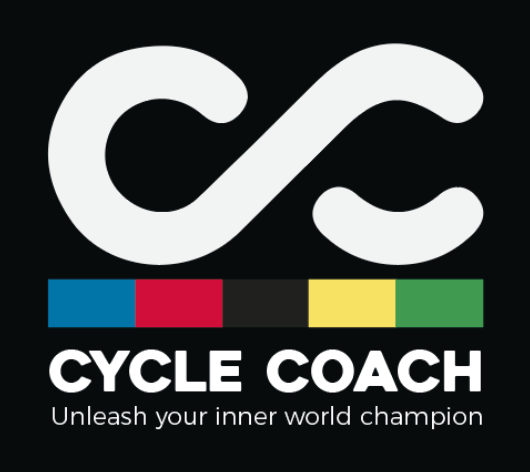Strength Training for Cyclists Over 40: How to Rebuild Power Safely This Winter
For masters cyclists, winter strength work isn’t an optional extra, it’s the foundation that lets you keep riding strong year after year. The bike builds endurance. The gym builds the chassis that endurance depends on.
Once you’re past 40, the correct strength training does more than add power, it keeps your joints stable, your hormones healthier, and your body capable of handling the load that cycling alone can’t provide.
The key is to rebuild power safely: enough intensity to adapt, not so much that recovery breaks down.
Why strength work matters more with age
From your mid-30s onward, muscle mass and tendon stiffness decline gradually, a process known as sarcopenia. Left unchecked, it eats away at the very qualities that make riding feel good: torque, posture, stability, and resilience.
Strength training slows, or even reverses that process. The benefits are broad:
More torque and climbing power. You’ll turn over big gears more efficiently.
Increased power. You’ll have more power over durations from seconds to hours
Better bone density and connective tissue strength. Protection against crashes and overuse.
Improved glucose control. Keeps energy steadier through long rides.
Postural support. Fewer aches, better breathing, stronger core endurance.
The takeaway: strength work is performance training, not “cross training.”
The evidence-backed strength moves
Over the past decade, several peer-reviewed studies have identified a small cluster of lifts that consistently raise cycling power, from short sprints to sustained endurance. The four that show up again and again are:
Standing hip flexion – improves the upward phase of the pedal stroke and trunk stability.
Single-leg toe or calf raise – strengthens the ankle and lower leg for better power transfer.
Single-leg leg press – develops unilateral force and balance across pedals.
Back squat – the cornerstone for hip and knee extension power.
I spoke about these last year in a Cycling Weekly interview. The data are clear: when these exercises are progressed correctly and integrated with endurance training, cyclists improve across time domains of seconds to hours.
But those lifts don’t exist in isolation. You have to earn the right to load them through movement prep and tendon conditioning first.
👉 Join the CycleCoach Collective — power-based plans, structured strength, & TrainingPeaks Premium included.
Start your 7-day free trial → https://www.cyclecoach.com/collective75
Preparation before loading
If you’ve been off strength work for a while, don’t rush straight into those big four movements.
Spend 3–4 weeks re-teaching your body the basics:
Hip hinge and glute activation – bodyweight RDLs or light kettlebell hinges.
Core bracing – dead bugs, bird-dogs and planks to stabilise under pressure.
Single-leg balance – step-downs, split squats and ankle mobility drills.
This “prep phase” wakes up stabilisers and primes connective tissue. It also gives you time to refine breathing and posture before adding real load.
Building strength safely
Once your base feels solid, shift to a simple 2-day structure.
You don’t need complex periodisation; you need repeatability.
Session A — Heavier Focus
Back squat — 4×5 @ RIR 2
Single-leg leg press — 3×6–8
Standing hip flexion — 3×8–10
Farmer’s carry — 3×20 metres/side
Session B — Power & Control
Split squat — 3×8/side
Calf raise (single-leg) — 3×10–12
Row or pull-up — 3×10–12
Kettlebell swing or box jump — 3×8–10 (speed focus)
You can substitute the lifts freely based on equipment and comfort, the key is maintaining pattern integrity, not chasing load.
Adding power and upper-body balance
Cyclists often neglect the top half of the body, but your upper chain transfers force and stabilises posture, especially when climbing or sprinting.
Once you’re comfortable under moderate load, add these low-volume power and posture drills:
Box jumps or step jumps – for explosive coordination.
Med-ball slams or push-presses – integrate hip and shoulder drive.
Rows or pull-ups – balance your push-pull strength and keep your shoulders healthy.
These bridge gym strength into on-bike power.
Progression and recovery
Start lighter than you think.
The first 2–3 weeks are about coordination and tissue conditioning, not numbers.
When every rep feels smooth and you can hold form under fatigue, add 2–5 kg or extend the range.
Keep two reps in reserve (RIR 2) — it’s your recovery safeguard.
If you’re sleeping poorly, feeling sore, or your rides feel flat, drop one set per lift for a week.
Recovery is where the adaptation happens ,not in the last rep of a heavy set.
Combining gym and bike
Winter base: 2 gym + 3–4 rides per week.
Spring build: 1 gym + 4–5 rides.
In-season: 1 maintenance session every 7–10 days.
If time’s tight, ride first, lift later — or separate the two by several hours.
Never lift heavy before threshold or VO₂ work.
Common mistakes
Going too heavy too soon — tendons adapt slower than muscles.
Skipping prep work — leads straight to knee or back niggles.
Ignoring single-leg work — most cycling power imbalances are side-to-side.
Chasing soreness — DOMS isn’t progress; consistency is.
Poor bracing — core pressure is your safety belt; learn to use it.
The bottom line
Strength training is your long-term investment in durability and speed. Done well, it rebuilds power across every time frame , not by hammering load, but by respecting progression and recovery.
A few key lifts, properly earned and executed, can raise your ceiling and deepen your foundation.
👉 To see how strength, endurance and recovery fit together week-to-week, download The 6 Pillars of Masters Performance.
---
Ready to stop winging winter training?
The CycleCoach Collective gives you:
• Power-based training plans tailored for 40+ riders
• Strength sessions to rebuild power safely
• TrainingPeaks Premium included
• $75/month — 7-day free trial
Zero risk — cancel anytime
Over 40? This is exactly who the Collective was built for.
